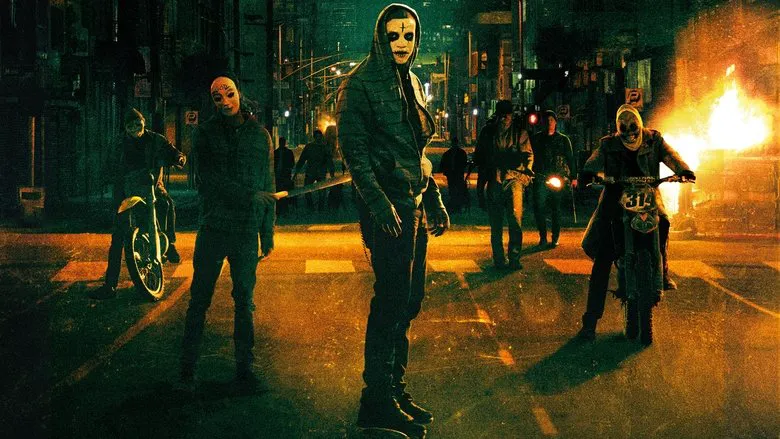The Purge: Anarchy - Delving into the Depths of State-Sanctioned Chaos
James DeMonaco’s “The Purge: Anarchy” plunges viewers back into the terrifying reality of a dystopian America, where for one night each year, all criminal activity is legalized. Released in North America on July 18, 2014, this sequel features a stellar cast including Frank Grillo, Michael K. Williams, Zach Gilford, and Kiele Sanchez. It expands upon the unsettling premise of the original, offering a more visceral and action-packed experience.
Anatomy of a Dystopian Premise
The core concept remains chillingly simple: for twelve hours, the U.S. government suspends all laws, unleashing a wave of violence and depravity across the nation. This annual event, insidiously named “The Purge,” is ostensibly designed to ensure peace and economic prosperity for the remaining 364 days. However, beneath the surface lies a darker truth: the Purge serves as a brutal form of population control, disproportionately targeting the poor and marginalized. As the sun sets, the nation descends into a nightmarish orgy of terror and bloodshed, forcing ordinary citizens to fight for their survival.
From Low Budget to High Impact: A Franchise is Born
Following the unexpected box office success( generating $36.37 million on its opening weekend) of the initial “Purge” film completed with a budget of less than $3 million in June 2013, “The Purge: Anarchy” solidified the franchise’s reputation for delivering compelling and thought-provoking stories on a relatively modest budget. The original film had been heralded as a potential successor to the “Paranormal Activity” series, thanks to its clever use of suspense and social commentary. The anticipation surrounding “The Purge: Anarchy” was palpable, with industry insiders and fans alike eager to see just how much carnage this next annual “bloodbath” would achieve in 2014.
Beyond the Thrills: Exploring Societal Fault Lines
“The Purge: Anarchy” goes beyond merely delivering cheap thrills. It uses its dystopian setting to explore deeper societal issues, such as class inequality, government corruption, and the human capacity for both good and evil. The film raises uncomfortable questions about the lengths to which people are willing to go to protect themselves and their loved ones, and the consequences of a society that prioritizes economic stability over basic human rights. While it relies on genre conventions, it also attempts to offer a commentary on contemporary American society that gives the experience dimension, so it resonates with a broader audience beyond pure horror fans.